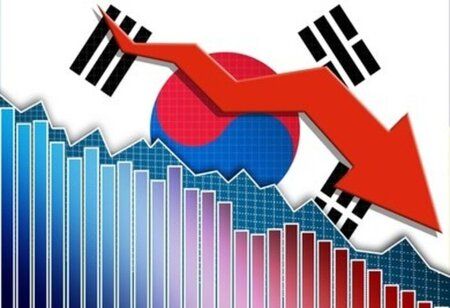
According to preliminary data, South Korea's GDP fell 0.1% year on year in the first quarter, marking the country's first contraction since the fourth quarter of 2020.
According to data from the Bank of Korea, the primary reason for the decline was the contraction in the construction sector, which fell 12.4% year over year.
A 0.2% quarterly decline in GDP offset the 0.1% increase in the fourth quarter of 2024.
The Bank of Korea warned in its monetary policy statement issued on April 17 that South Korea's GDP growth in 2025 is expected to be below the Bank of Korea's February forecast of 1.5%. At its April meeting, the central bank maintained rates at 2.75%.
Domestic economic growth has been weaker than expected, according to the BOK, as both domestic demand and exports have slowed due to prolonged political uncertainty and deteriorating trade conditions.
According to an April 17 note from Jeff Ng, Head of Asia Macro Strategy at Sumitomo Mitsui Banking Corporation, the slowdown was expected, and the BOK may cut rates further "in the coming months." He expects the next rate cut to occur in May.
In a note dated April 24, ANZ stated that the data showed a broad-based pullback in the economy amid domestic political turmoil and rising global trade tension.
The bank went on to say that "the challenging growth backdrop warrants a stronger policy response," predicting that 2025 will see fiscal stimulus surpass 1% of GDP and that the BOK will reduce rates two or three more times by year's end.
As the impeachment trials of Prime Minister Han Duck-soo and former President Yoon Suk Yeol continued, political unpredictability dominated South Korea's first quarter.
The Constitutional Court overturned Han's impeachment in March and reinstated him as acting president, before Yoon was removed from office on April 4. South Korea will hold presidential elections on June 3.
The trade war has also had an impact on the country's export-oriented economy. While U.S. President Donald Trump temporarily suspended his blanket "reciprocal tariffs" on April 9, South Korea remains subject to a 25% tariff on steel and automobiles, two of the country's largest exports to the United States.
According to ANZ, "While South Korea has a good chance of negotiating a trade deal with the US, its electoral calendar may push the timeline for a comprehensive agreement." Following the election on June 3, a new government will be formed, and its stance will most likely shape the outcome of negotiations."
South Korean automakers Hyundai and Kia are among the top eight best-selling brands in the United States. The country is also the fourth-largest steel exporter to the US.
The GDP announcement coincides with a delegation from South Korea visiting the US for trade negotiations, during which acting President Han is said to have expressed his expectation that a win-win solution will be reached.
The agenda for the U.S. meeting is still being arranged and is not yet finalized, according to South Korea's ministry of trade, industry, and economy.
We use cookies to ensure you get the best experience on our website. Read more...